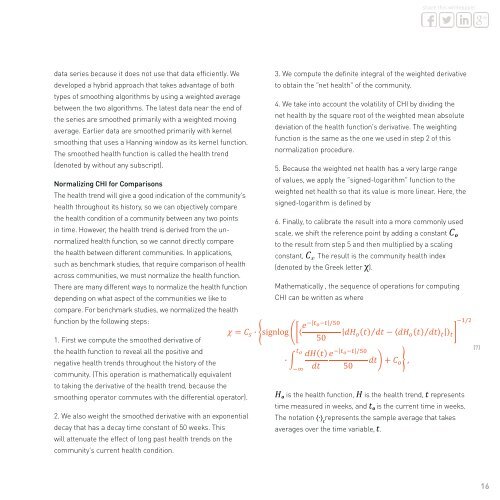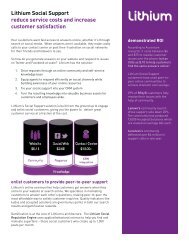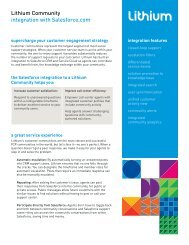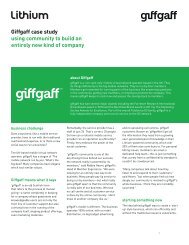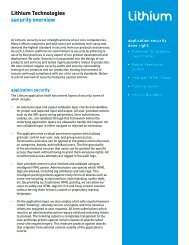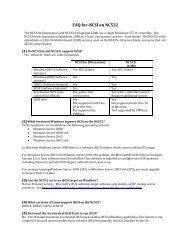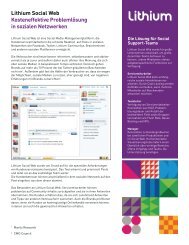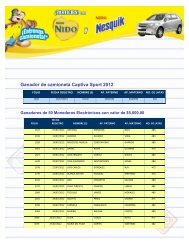Community Health Index - Lithium
Community Health Index - Lithium
Community Health Index - Lithium
You also want an ePaper? Increase the reach of your titles
YUMPU automatically turns print PDFs into web optimized ePapers that Google loves.
data series because it does not use that data efficiently. We<br />
developed a hybrid approach that takes advantage of both<br />
types of smoothing algorithms by using a weighted average<br />
between the two algorithms. The latest data near the end of<br />
the series are smoothed primarily with a weighted moving<br />
average. Earlier data are smoothed primarily with kernel<br />
smoothing that uses a Hanning window as its kernel function.<br />
The smoothed health function is called the health trend<br />
(denoted by without any subscript).<br />
Normalizing CHI for Comparisons<br />
The health trend will give a good indication of the community’s<br />
health throughout its history, so we can objectively compare<br />
the health condition of a community between any two points<br />
in time. However, the health trend is derived from the unnormalized<br />
health function, so we cannot directly compare<br />
the health between different communities. In applications,<br />
such as benchmark studies, that require comparison of health<br />
across communities, we must normalize the health function.<br />
There are many different ways to normalize the health function<br />
depending on what aspect of the communities we like to<br />
compare. For benchmark studies, we normalized the health<br />
function by the following steps:<br />
1. First we compute the smoothed derivative of<br />
the health function to reveal all the positive and<br />
negative health trends throughout the history of the<br />
community. (This operation is mathematically equivalent<br />
to taking the derivative of the health trend, because the<br />
smoothing operator commutes with the differential operator).<br />
2. We also weight the smoothed derivative with an exponential<br />
decay that has a decay time constant of 50 weeks. This<br />
will attenuate the effect of long past health trends on the<br />
community’s current health condition.<br />
share this whitepaper<br />
3. We compute the definite integral of the weighted derivative<br />
to obtain the “net health” of the community.<br />
4. We take into account the volatility of CHI by dividing the<br />
net health by the square root of the weighted mean absolute<br />
deviation of the health function’s derivative. The weighting<br />
function is the same as the one we used in step 2 of this<br />
normalization procedure.<br />
5. Because the weighted net health has a very large range<br />
of values, we apply the “signed-logarithm” function to the<br />
weighted net health so that its value is more linear. Here, the<br />
signed-logarithm is defined by<br />
6. Finally, to calibrate the result into a more commonly used<br />
scale, we shift the reference point by adding a constant


